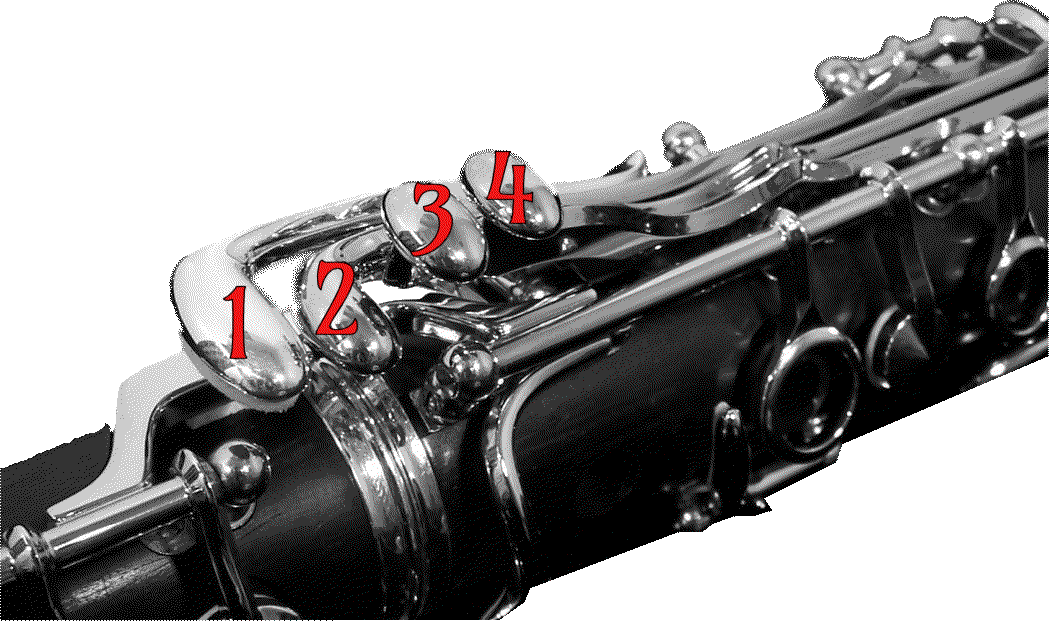
The keys pictured here allow you to "trill" over the break - (between the first and second register). In the Classical world the ability to trill every note - (Move rapidly to a note a semitone above, and back again)- is very important. Trills are less important in jazz improvisation, but these keys do allow you to embellish notes that might otherwise be left alone.
Tone/Timbre is the big limiter here. "B2" - the first note in the second register - for example, and when played with its usual fingering ie; All Down, will give you a full-bodied note that can be held. The same note when played with trill key "3", is thin and reedy; fine for an embellishment, but not so fine as an integral melodic note. The same applies to key "4", which will produce "C2" - the second note in the second register.
There are actually several types of clarinet. Hit the following Wiki link; I guarantee you'll be surprised!
The most widely used is the Bflat instrument...if you already own a clarinet, this is what will be in the case (probably!). In my career I have played (owned!) the "Bb", the "A". the "Eb", and the "Bass" clarinets. They each have their different uses, and they each have their different places in my heart.